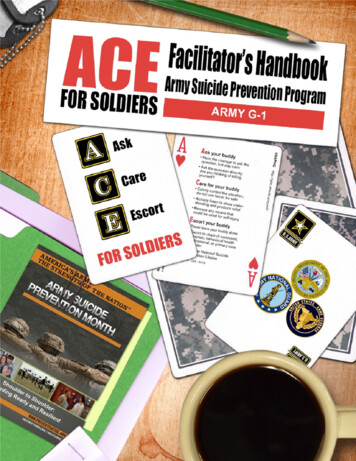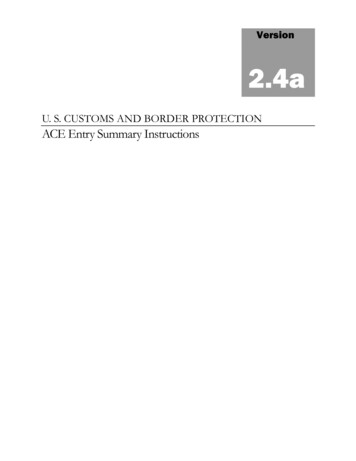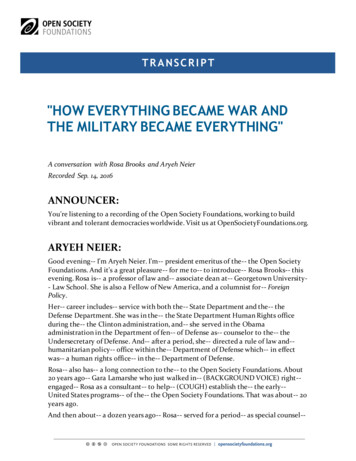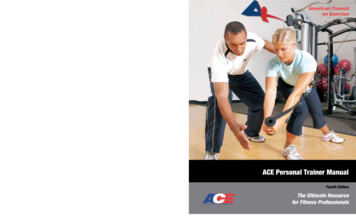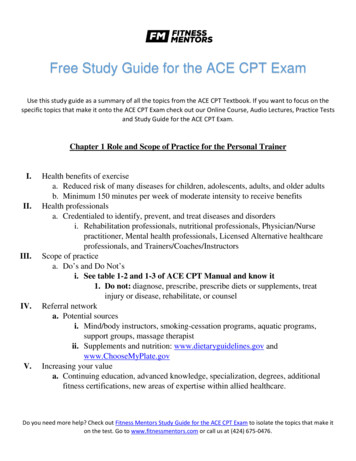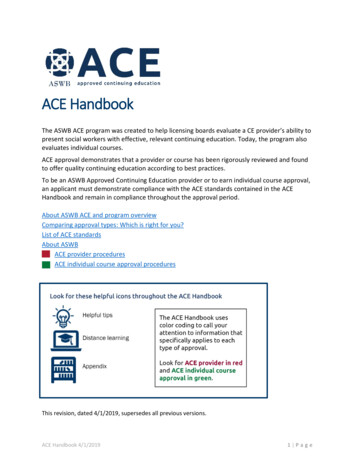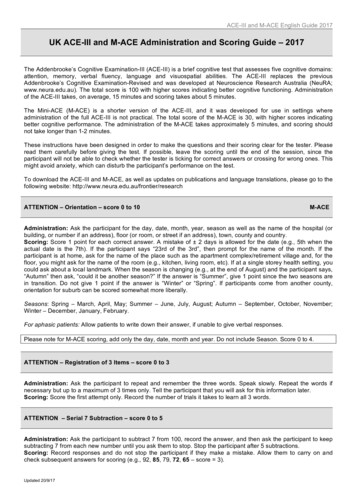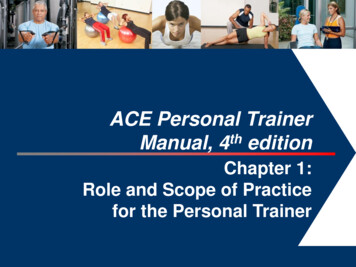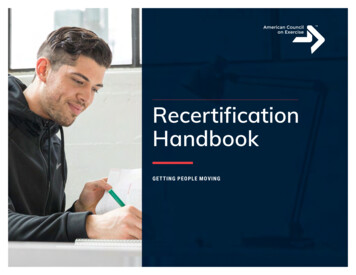
Transcription
EVERYTHING YOUNEED TO ACEENGLISHLANGUAGEARTSIN ONE BIGFAT NOTEBOOK Flexibound paperback5⅞" x 8" 496 pages 14.95 U.S. Higher in Canada978-0-7611-6091-5 No. 16091ComingAugust2016
VerbVerb PhrasesA VERB PHRASE is a phrase thatacts like a verb.a word that describes anaction, state of being, oreventCLAUSESA CLAUSE is a group of words that includes at least asubject and a verb. A clause always contains a subject thatacts through a verb.Example:How to tellclauses and phrases apartThese strange rocks maybe worth a fortune.* A phrase doesn’t have a subject that actsWORK S TOG ETH ER AS A V ERBAdverb Phrasesthrough a verb.adverba word that modifies ordescribes the quality of a verb,adjective, or another adverbAn ADVERB PHRASE is a phrasethat acts like an adverb.* A clause DOES have a subject that actsthrough a verb.Example:She moved through the library like a spy through anenemy's headquarters.Examples:WORK S TOG ETH ER AS AN A DV ERBPHRASEAdjective PhrasesadjectiveAn ADJECTIVE PHRASE is aphrase that acts like an adjective.a word that modifies ordescribes the quality ofa nounExample:The crowd was far more excited now than during thefirst half of the game.WORK S TOG ETH ER AS AN A DJ ECTIV EIn the nick of timeNO V ERB, SO IT’S A P HRASETripping merrily alongNO SUBJ ECT, SO IT’S A P HRASECLAUSEbefore the summer endedTH E “SUMM ER ” IS DOING SOM ETHING—IT’S EN DING—SO IT’S A CL AUSE.Because the wolf hid out inthe forestTH ER E IS A SUBJ ECTDOING SOM ETHING—TH E WOLF ISHI DING—SO IT’S A CL AUSE.Clauses make up a pretty wide category! But they arecategorized into two groups to help us work with them.45
Chapter 10FIGURATIVELANGUAGEExample:Instead of writing,“It’s raining hard outthere,” we might write,“It’s raining cats anddogs.” We don’t meanthat puppies and kit tensare literally falling fromthe sky.So why would we write it that way? Well, it’s moreinteresting, and figures of speech can amplify what we'retrying to communicate. People will pay more at tention towhat we’re saying . . . and be more likely to remember it.That’s called RHETORICAL FORCE: the way we use words tomake our points clear, interesting, and memorable.But it’s important to be able to recognizethe difference between figurative andliteral language, otherwise we mightFIGURES of SPEECHthink cats and dogs are literally fallingfrom the sky.A FIGURE OF SPEECH is language thatisn’tLITERAL, straightforward, orfactual. A figure of speech is the oppositeof LITERAL LANGUAGE, which states theLITERALan understanding ofwords at their mostbasic sensefacts, and nothing but the facts.9697
CHRONOLOGICAL STRUCTUREOne way to differentiate between the types of text is tolook for these signal words:organizes events bywhen they happened.PROCESS STRUCTUREexplains the series of actions ofhow they happen.This structureoftenoverla ps withchronolo g icaland causeand effectstructures.CAUSE AND EFFECT STRUCTUREText TypePurposeSignal Wordsin comparisonby contrastCOMPAREShows how twosimilarlyandor more thingsbutare similaron the other handand/or differenton the contraryCONTRASTdescribes an action or eventyetand its consequences.howeverdespitePROBLEM AND SOLUTIONSTRUCTUREas opposed toexplains a problem andfirstoffers a solution.nextShows the orderthenoror ranking of abeforePROCESSseries of actionsafterCHRONOLOGICALDESCRIPTION STRUCTUREgives an account of somethingby offering the relevant details,lastcharacteristics, and information.finallyA piece of writing can blend or combine structures as well.3541,2,3, . . .A,B,C, . . .355
Major SectionsIn anThe major sections of a piece of writing are the big piecesthat make up the whole.In aINTRODUCTION OF THE ARGUMENTNEWS ARTICLE, the major sections are:HEADLINE: the big title that appears above the articleLEAD (or LEDE) : the first lines of the article,which contain the main ideaMAIN POINTTWOThe numberof main pointscan vary.BODY: contains the elaboration and details of themain ideaGenerally, news articles are structured like this:Who, What, When, Where,Why, How, Etc.M OSTIM n aMAINPOINTONESUPPORTING EVIDENCESUPPORTINGEVIDENCESome teachers call this warrants,or the explanation of the evidencethat connects it to the grounds.CONCLUSIONBIOGRAPHY, the major sections often are:INTRODUCTIONOF THE PERSONDESCRIPTION OF HIS/HER EARLY LIFEHIS/HER MOST IMPORTANT ACCOMPLISHMENTS/MAJOR EVENTS IN LIFEBACKGROUNDDETAILS358ARGUMENT, the major sections are:Some teacherscall thisGROUNDS.LE ASTIM PORTANTINFORM ATIONHIS/HER EFFECTS OR IMPACT ON SOCIETYAND HISTORY359
Chapter 29WRITINGPRACTICESThere are three questions to think about to develop an idea:1. TASK: What do you want to write? (Or what haveyou been assigned to write?)EXAMPLE: writing a business plan for your soccerteam fund-raiser2. PURPOSE: Why doyou want to write it?DevelopmentEXAMPLE: to get enoughYou want to write something, butmoney from your friends, family, and community towhere do you start? You start withrent a van to travel to a state competitionDEVELOPMENT. There are twostages of development :1. Planning: laying the initial plans2. Revising your plan: going over the initial plansand making any necessary changes3. AUDIENCE: Who are youwriting to?EXAMPLE: your friends, family,community, and local businessownersJust think of thesethree question wordswhen you are indevelopment to focusyour task, purpose,and audience:WHAT?WHY?WHO?DEVELOPMENTthe planning that goes intoa writing project before youbegin writingYou may even want to jot down the answers to thesequestions before starting to write. You can keep the answersin front of you as a reminder of what you must write.402403
EVERYTHING YOU NEED TO ACE ENGLISH LANGUAGE ARTS IN ONE BIG FAT NOTEBOOK Flexibound paperback 5⅞" x 8" 496 pages 14.95 U.S. Higher in Canada 978--7611-6091-5 No. 16091 14.95 U.S. Higher in Canada 978--7611-6091-5 No. 16091 Coming August 2016
